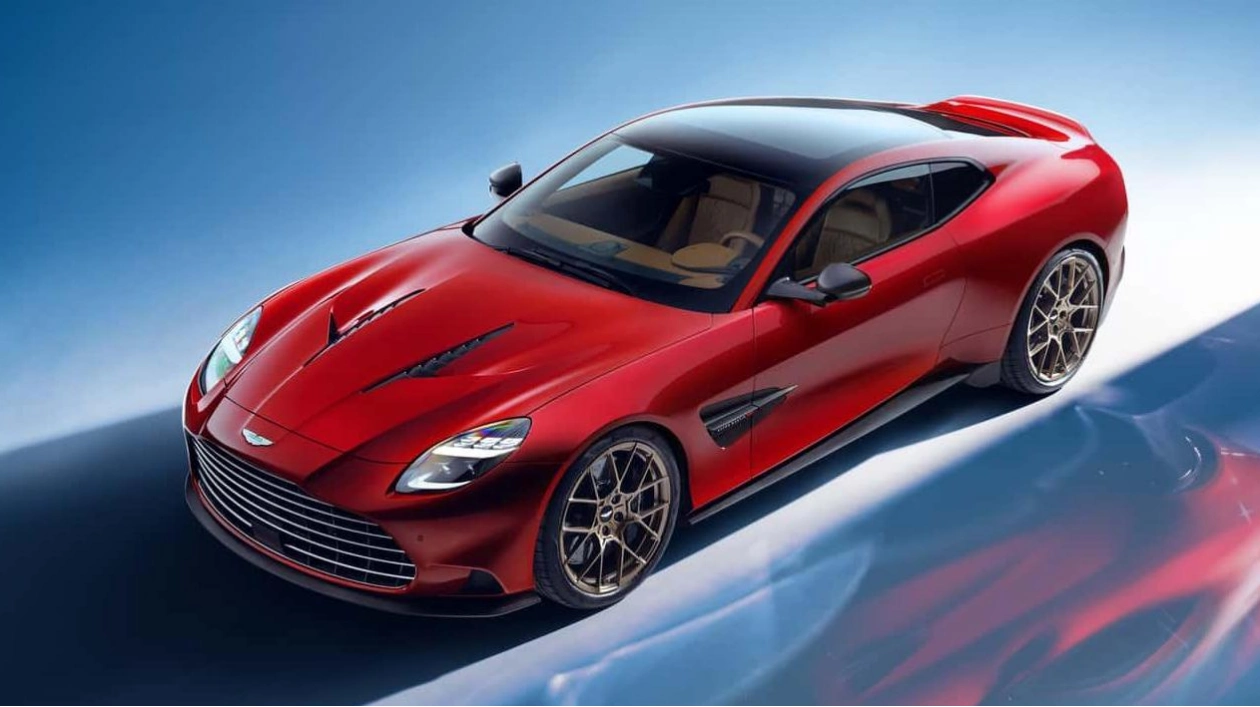For some, nothing but a V-12 will suffice. Despite the impressive 671 horsepower and superior sound of the twin-turbo 4.0-liter V-8 in the DB12, the lack of cylinders is a deal-breaker. Hence, Aston Martin is resurrecting a legendary name in the automotive world with a V-12: Vanquish. After a six-year hiatus and a failed attempt at creating a mid-engine supercar, the Aston Martin Vanquish returns, reaffirming its heritage. This is a bold, powerful, and luxurious grand tourer, equipped with a 5.2-liter twin-turbo V-12 producing 824 horsepower and capable of reaching a top speed of 214 mph. Aston Martin plans to produce no more than 1,000 units annually, with a starting price of $420,000.
The engine maintains the basic dimensions of its predecessor but has undergone significant modifications. To enhance both power and torque—reaching an impressive 738 pound-feet—while complying with stricter emission standards, the V-12 features a new block, heads, ports, camshafts, connecting rods, turbochargers, fuel injectors, and relocated spark plugs. Essentially, everything has been updated. Aston Martin claims the engine is virtually unrecognizable from its former version. Paired with a rear-mounted eight-speed automatic gearbox, similar to the new Vantage and DB12, it includes an electronically controlled limited-slip differential. A new feature, Boost Reserve, allows for increased boost pressure beyond normal requirements, ensuring immediate power delivery when needed, coordinated through the throttle and electronically controlled wastegate. The final-drive ratio supports the high top speed, yet acceleration remains robust—0-60 mph in 3.2 seconds.
Like other contemporary Astons, the Vanquish features a bonded and extruded aluminum monocoque chassis, but with predominantly carbon-fiber bodywork, unlike the DB12 and Vantage. It weighs 3,911 pounds in its lightest configuration but exceeds 4,000 pounds when fully loaded. The bespoke Pirelli P-Zero tires measure 275/35 front and 325/30 rear, complemented by forged wheels and carbon-ceramic brakes to manage unsprung weight. Advanced chassis technology includes Bilstein DTX dampers and a six-axis inertial measurement unit for precise control over dampers, electronic differential, and traction/stability systems. A new Corner Braking system enhances rear-end stability during braking into corners.
Inside, the Vanquish resembles other current Aston Martin models, featuring a new center console with physical controls and a custom infotainment system. The cabin, a significant improvement over older models, is far from lackluster. Compared to the DB12, the Vanquish is longer, wider, and lower, with a slightly extended wheelbase, overall length, and width, but reduced height. It retains the classic Aston look but with a more sculpted front hood and prominent rear haunches. The distinctive Kamm tail, inspired by 1960s Le Mans racers like the DP212, DP214, and DP215, sets it apart. The profile and rear also echo the limited-edition Valour, referencing the robust GTs of the 1970s.
This marks only the third time Aston Martin has utilized the Vanquish nameplate. Its predecessors, iconic V-12 GT cars, set a high standard, but initial impressions suggest this new model is well-equipped to meet the challenge.






